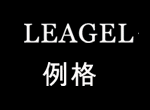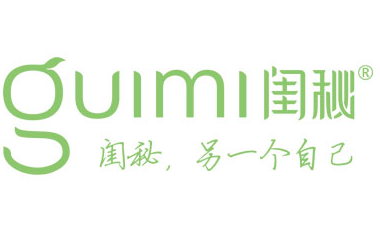The United States is the originator of chain operation, and also the developed chain industry in the world.
From a global perspective, the development of American chain operation has always acted as the "leader" of the world chain. So far, the United States is still the world's developed chain industry in China. The development history of American chain operation can be divided into four stages:
1. The initial stage of chain
The period from the middle and late 19th century to the 1950s was the initial stage of the development of chain operation in the United States. During this period, American chain operation experienced three periods: emergence, growth and decline.
In 1859, after the emergence of the world's priority chain store, with its continuous improvement, the organizational form of chain operation has won the competitive advantage over individual stores for Atlantic and Pacific tea companies. In 1865, the company had 25 stores. In 1880, it had grown to 100 stores. In 1900, it had soared to 200 stores, with an annual sales volume of $5 million. Its business varieties have expanded from tea to coffee, cocoa tea, sugar and various concentrated fruit juices. Because the company adopts the chain operation mode to open stores with the same capital, this form is later called direct chain. In 1865, Singer Sewing Machine Company of the United States set up franchised outlets with sales rights all over the country. By virtue of the franchise rights of its products, the company has organized a number of stores around the world to implement chain operation, which is the first franchise chain store in the world. In 1887, more than 130 independent food retailers in the United States volunteered to join forces and jointly selected wisdom to set up a food wholesale company with joint purchase and distribution. The participants became the priority free chain stores in the world. By 1900, the number of chain enterprises in the United States had grown to 58, completing the establishment stage of the traditional chain operation in the United States.
After giving priority to the World War II, the chain business in the United States entered a growth period. The proportion of the sales of chain business in the total retail sales rose from 4% in to 25010 in 1929. By 1930, 11% of the retail organizations in the United States had adopted the organizational form of chain business, and the retail sales of food chain business had accounted for 32% of the total retail sales.
During the 20 years from 1930 to 1950, the chain operation in the United States entered a period of decline. The main reasons are: priority, affected by the Great Depression of the world economy in the 1930s and the Second World War; Second, during this period, the chain operation was mainly in the form of "trademark commodity chain". The chain stores borrowed the goods and trademark names of the head office for operation, but there was no unified management system. Later, in the process of rectifying such stores, the number of chain stores showed a trend of reduction.
2. Modern chain stage
In the 1950s and 1980s, American chain operation has achieved rapid development. The main reasons are: priority, the completion of the expressway network. After the Second World War, the United States 32: The establishment of the domestic highway network for the management and operation of retail chain supermarkets gradually shifted the freight transport mode from railway transport to automobile transport. By 1967, 12010 (about 2 million) American trucks were concentrated in the retail industry. Since the 1970s, container cars have become the main transportation force in the United States, which has created conditions for the cross regional layout of chain stores in the United States. Second, the popularization of computer technology. The wide application of computer technology, especially computer network system in chain operation enterprises, has improved/increased the efficiency of chain operation management and the timeliness of information transmission. Third, the rise of various formats. After the supermarket appeared in the 1930s, the self service sales mode was soon introduced to chain stores, forming and expanding into chain supermarkets, chain supermarkets, chain warehouse stores, chain discount stores, etc. in all regions and industries throughout the United States. The integration of chain operation and various business forms has promoted the rapid development of chain operation in the United States. During this period, free chain and franchise chain also developed to a certain extent, and chain operation gradually stepped into a mature and standardized track.
3. Chain stage of development and establishment
Since the 1980s, chain operation has entered a period of comprehensive development and penetration. It is equivalent to the "traditional chain" before the 1930s and the "modern cooked food chain" popular in the 1950s. In the 1980s, the chain industry entered a new era of "modern chain stores". It is characterized by diversified business practices. Chain operation is no longer limited to a few traditional industries such as retail and catering, but has begun to penetrate into non food retail, hotel, real estate, leasing, fitness and beauty, commercial services and other fields. During this period, not only did it expand the field of the chain industry, but also the potential of the service industry was brought into full play. In particular, the commercial service industry, which came into being in response to the needs of consumers and enterprises, became a new force in the development of the chain industry.
4. Technological and international chain stage
In the past 10 years, with the modernization of communication means and the development of science and technology, the economic exchanges between and have become increasingly close. In the wave of global economic integration, chain stores have also entered an era of internationalization. During this period, the American chain industry, with its abundant capital, advanced management, and mature technology, developed overseas markets ambitiously. The internationalization of the American chain industry has not only promoted the technological progress of business operation, but also spread consumer culture around the world. This "culture" includes: consumer fashion (chain stores create a consumer fashion that spreads all over the world), equal personality (chain stores provide the same service, the same goods, and consumers pay the same price) Modern rhythm (fast service, fast consumption), simplicity (appearance design, interior decoration layout of chain stores, etc., can constantly bring forth new ideas while maintaining a pleasing natural style), and promote the development of world civilization.














